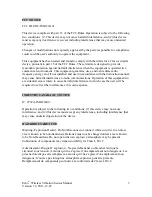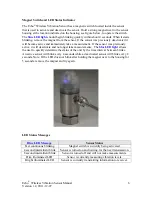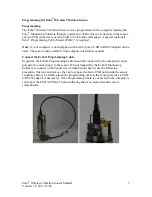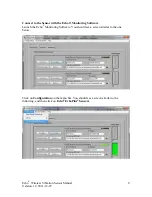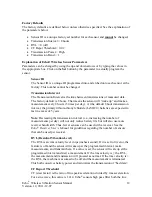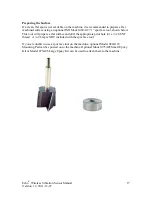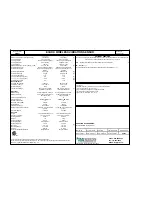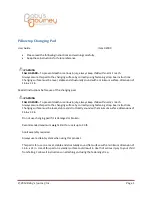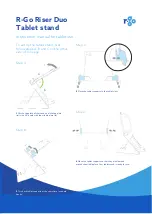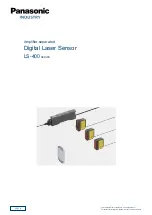
Echo
®
Wireless Vibration Sensor Manual
Version 1.2, 2011-12-07
13
peak and rms acceleration measurements for better HFE (high frequency energy)
response. This type of filtered measurement generally provides an earlier warning
of bearing, gear, and other high frequency faults. It can also result in very low rms
acceleration readings (sometimes in the noise) for healthy machines, particularly
if they operate at slow speeds. The CF Report Threshold value is a minimum rms
acceleration level at which CF will be computed. If the rms acceleration is below
this value, CF is returned as zero.
Transmission Power
The Echo
®
Wireless Vibration Sensor transmits at 0.75 mW ERP (Effective
Radiated Power). In some cases, the sensor may be so close to the antenna and the
signal strength so strong, that the receiver will see “reflections” of the transmitted
signal. While this does not affect data accuracy, it can use unnecessary receiver
bandwidth to deal with the reflections. If the received signal from a sensor is > 65
dB, the Transmission Power should be changed from High to Low to eliminate
this problem. This will cause the transmitted power to be reduced by about 45 dB.
Transmission Band
The Echo
®
System can operate on 12 independent user selectable RF bands.
Sensors will only communicate with receivers that are set to the same band that
they are set to. This allows for large installations requiring hundreds or thousands
of sensors and in cases where distances are too far to be picked up by a single
antenna location.
Saving Changes to the Echo
®
Sensor
Click the
Set
button next to each field to be updated to program the value in the Echo
®
Sensor. To verify the programming when all changes have been made, click the
Read
Parameters
button. When sensor programming is completed, click the
X
in the upper
right hand corner of the window.





